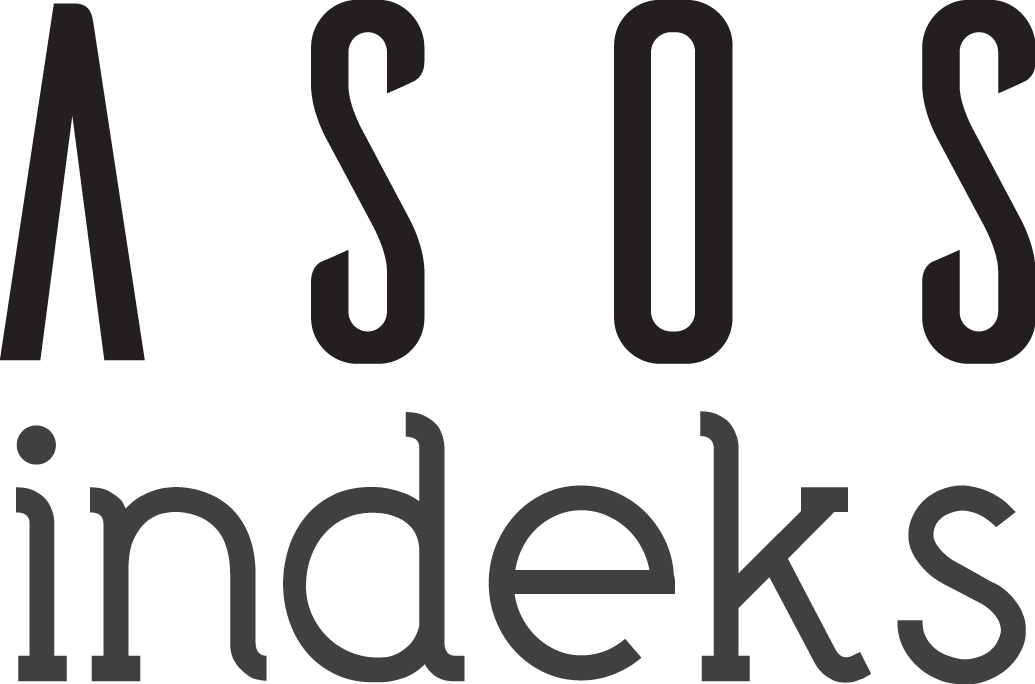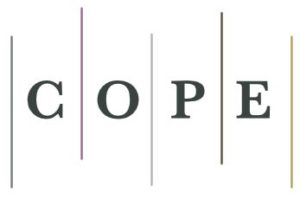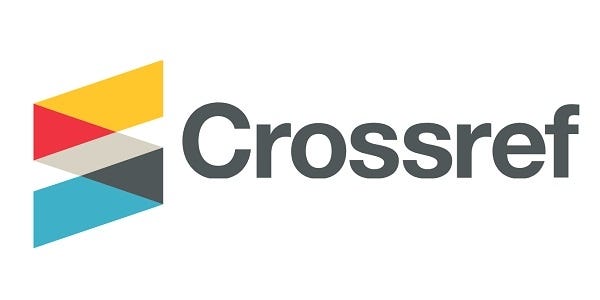Evaluation of the relationship between visceral obesity and abdominal aorta calcified plaques with computed tomography
Abstract
Aims: In this study, we aimed to investigate the relationship between the development of calcified plaques in the abdominal aorta and the amount and distribution of abdominal fat tissue.
Methods: Between September 2021 and April 2024, we selected 69 patients with calcified plaques in the abdominal aorta and 165 control patients who underwent non-contrast abdominal computed tomography for suspected ureterorenal stones. Demographic characteristics, clinical features, subcutaneous, visceral, and total fat tissue areas, their ratios, and the diameter of the abdominal aorta lumen were recorded.
Results: Patients with abdominal aortic calcified plaques showed significantly higher visceral fat area, visceral fat ratio, hypertension, diabetes, and hepatosteatosis. In contrast, no significant differences were found between the two groups regarding height, weight, body-mass index, and total fat tissue area. Additionally, patients with aortic wall calcification had significantly larger aortic lumen diameters compared to those without.
Conclusion: Calcified atherosclerotic plaques in the abdominal aorta are particularly associated with visceral fat area.
Ethical Statement
Ethics Committee Approval: The study was initiated with the approval of the Kastamonu University Faculty of Medicine Clinical Researches Ethics Committee (Date: 26/09/2024, Decision No: 2024/59). All authors have completed and submitted the ICMJE Form for Disclosure of Potential Conflicts of Interest. This research did not receive any specific grant from funding agencies in the public, commercial, or not-for-profit sectors. Informed Consent: Because the study was designed retrospectively, no written informed consent form was obtained from patients. Author Contributions: All of the authors declare that they have all participated in the design, execution, and analysis of the paper, and that they have approved the final version.
References
- Keys A, Fidanza F, Karvonen MJ, Kimura N, Taylor HL. Indices of relative weight and obesity. J Chronic Dis. 1972;25(6):329-343. doi:10.1016/0021-9681(72)90027-6
- McLaughlin T, Lamendola C, Liu A, Abbasi F. Preferential fat deposition in subcutaneous versus visceral depots is associated with insulin sensitivity. J Clin Endocrinol Metabol. 2011;96(11): E1756-E1760. doi:10.1210/jc.2011-0615
- Fox CS, Massaro JM, Hoffmann U, et al. Abdominal visceral and subcutaneous adipose tissue compartments: association with metabolic risk factors in the Framingham heart study. Circulation. 2007;116(1):39-48. doi:10.1161/circulationaha.106.675355
- McLaughlin T, Abbasi F, Lamendola C, Reaven G. Heterogeneity in the prevalence of risk factors for cardiovascular disease and type 2 diabetes mellitus in obese individuals: effect of differences in insulin sensitivity. Arch Int Med. 2007;167(7):642-648. doi:10. 1001/archinte.167.7.642
- Karlsberg D, Steyer H, Fisher R, et al. 426 impact of visceral abdominal tissue on coronary artery disease as defined by quantitative computed tomographic angiography. J Cardiovas Comp Tomograp. 2022;16(4):S13.
- Imai A, Komatsu S, Ohara T, et al. Visceral abdominal fat accumulation predicts the progression of noncalcified coronary plaque. Atherosclerosis. 2012;222(2):524-529.
- Shuster A, Patlas M, Pinthus JH, Mourtzakis M. The clinical importance of visceral adiposity: a critical review of methods for visceral adipose tissue analysis. Br J Radiol. 2012;85(1009):1-10. doi:10.1259/bjr/38447238
- Lamarche B, Lemieux S, Dagenais GR, Després JP. Visceral obesity and the risk of ischaemic heart disease: insights from the Québec cardiovascular study. Growth Horm IGF Res. 1998; 8(Suppl B):1-8. doi:10.1016/s1096-6374(98)80018-x
- Golledge J. Abdominal aortic calcification: clinical significance, mechanisms and therapies. Curr Pharmaceut Design. 2014; 20(37):5834-5838. doi:10.2174/1381612820666140212195309
- Yoon HE, Park BG, Hwang HS, et al. The prognostic value of abdominal aortic calcification in peritoneal dialysis patients. Int J Med Sci. 2013;10(5):617-623. doi:10.7150/ijms.5773
- Ohya M, Otani H, Kimura K, et al. Vascular calcification estimated by aortic calcification area index is a significant predictive parameter of cardiovascular mortality in hemodialysis patients. Clin Experiment Nephrol. 2011;15(6):877-883. doi:10.1007/s10157-011-0517-y
- Nielsen M, Ganz M, Lauze F, et al. Distribution, size, shape, growth potential and extent of abdominal aortic calcified deposits predict mortality in postmenopausal women. BMC Cardiovasc Disord. 2010;10(56):1-10.
- Verbeke F, Van Biesen W, Honkanen E, et al. Prognostic value of aortic stiffness and calcification for cardiovascular events and mortality in dialysis patients: outcome of the calcification outcome in renal disease (CORD) study. Clin J Am Soci Nephrol. 2011;6(1):153-159. doi:10.2215/cjn.05120610
- Parr A, Buttner P, Shahzad A, Golledge J. Relation of infra-renal abdominal aortic calcific deposits and cardiovascular events in patients with peripheral artery disease. Am J Cardiol. 2010; 105(6):895-899. doi:10.1016/j.amjcard.2009.10.067
- Ordulj I, Šarić F, Tandara M, et al. Visceral and ectopic abdominal fat effect on the calcification of the abdominal aorta and its branches-an MSCT study. Life (Basel). 2023;14(1):2.
- Park YS, Park SH, Lee SS, et al. Biopsy-proven nonsteatotic liver in adults: estimation of reference range for difference in attenuation between the liver and the spleen at nonenhanced CT. Radiology. 2011;258(3):760-766. doi:10.1148/radiol.10101233
- Kodama Y, Ng CS, Wu TT, et al. Comparison of CT methods for determining the fat content of the liver. AJR Am J Roentgenol. 2007;188(5):1307-1312. doi:10.2214/ajr.06.0992
- Park SH, Kim PN, Kim KW, et al. Macrovesicular hepatic steatosis in living liver donors: use of CT for quantitative and qualitative assessment. Radiology. 2006;239(1):105-112. doi:10. 1148/radiol.2391050361
- Manson JE, Willett WC, Stampfer MJ, et al. Body weight and mortality among women. New Engl J Med. 1995;333(11):677-685. doi:10.1056/nejm199509143331101
- Whitlock G, Lewington S, Sherliker P, et al. Body-mass index and cause-specific mortality in 900 000 adults: collaborative analyses of 57 prospective studies. Lancet (London, England). 2009;373(9669):1083-1096. doi:10.1016/s0140-6736(09)60318-4
- Lee H, Kim H, Jeon JS, Noh H, Lee EJ, Kwon SH. Association between abdominal perivascular adipose tissue quantity and quality assessed by CT and cardiometabolic risk. Clin Nutrit (Edinburgh, Scotland). 2023;42(6):869-878. doi:10.1016/j.clnu. 2023.04.003
- Goodpaster BH, Krishnaswami S, Harris TB, et al. Obesity, regional body fat distribution, and the metabolic syndrome in older men and women. Arch Int Med. 2005;165(7):777-783. doi: 10.1001/archinte.165.7.777
- Rosenquist KJ, Pedley A, Massaro JM, et al. Visceral and subcutaneous fat quality and cardiometabolic risk. JACC Cardiovas Imag. 2013;6(7):762-771. doi:10.1016/j.jcmg.2012.11.021
- Jayalath RW, Mangan SH, Golledge J. Aortic calcification. Eur J Vasc Endovasc Surg. 2005;30(5):476-488. doi:10.1016/j.ejvs.2005. 04.030
- Kim ED, Kim JS, Kim SS, et al. Association of abdominal aortic calcification with lifestyle and risk factors of cardiovascular disease. Korean J Family Med. 2013;34(3):213-220. doi:10.4082/kjfm.2013.34.3.213
- Figueiredo CP, Rajamannan NM, Lopes JB, et al. Serum phosphate and hip bone mineral density as additional factors for high vascular calcification scores in a community-dwelling: the São Paulo Ageing & Health Study (SPAH). Bone. 2013;52(1):354-359. doi:10.1016/j.bone.2012.10.019
- Sutton-Tyrrell K, Newman A, Simonsick EM, et al. Aortic stiffness is associated with visceral adiposity in older adults enrolled in the study of health, aging, and body composition. Hypertension (Dallas, Tex : 1979). 2001;38(3):429-433. doi:10. 1161/01.hyp.38.3.429
- Jain SH, Massaro JM, Hoffmann U, et al. Cross-sectional associations between abdominal and thoracic adipose tissue compartments and adiponectin and resistin in the Framingham heart study. Diabetes Care. 2009;32(5):903-908. doi:10.2337/dc08-1733
- Efe D, Aygün F, Acar T, Yildiz M, Gemici K. Investigation of relation between visceral and subcutaneous abdominal fat volumes and calcified aortic plaques via multislice computed tomography. Vascular. 2015;23(4):396-402. doi:10.1177/1708538114552012
- Pleumeekers HJ, Hoes AW, van der Does E, et al. Aneurysms of the abdominal aorta in older adults. Am J Epidemiol. 1995; 142(12):1291-1299. doi:10.1093/oxfordjournals.aje.a117596
- Newman AB, Arnold AM, Burke GL, O’Leary DH, Manolio TA. Cardiovascular disease and mortality in older adults with small abdominal aortic aneurysms detected by ultrasonography: the cardiovascular health study. Ann Int Med. 2001;134(3):182-90. doi:10.7326/0003-4819-134-3-200102060-00008
- Madaric J, Vulev I, Bartunek J, et al. Frequency of abdominal aortic aneurysm in patients >60 years of age with coronary artery disease. Am J Cardiol. 2005;96(9):1214-1216. doi:10.1016/j.amjcard.2005.06.058
- Fornasari A, Kuntz S, Martini C, et al. Objective methods to assess aorto-iliac calcifications: a systematic review. Diagnostics (Basel, Switzerland). 2024;14(10):1053. doi:10.3390/diagnostics14101053
- O’Connor SD, Graffy PM, Zea R, Pickhardt PJ. Does nonenhanced CT-based quantification of abdominal aortic calcification outperform the Framingham risk score in predicting cardiovascular events in asymptomatic adults? Radiology. 2019;290(1):108-115. doi:10.1148/radiol.2018180562
- Tchernof A, Després JP. Pathophysiology of human visceral obesity: an update. Physiol Rev. 2013;93(1):359-404. doi:10.1152/physrev.00033.2011
Visseral obezite ile abdominal aort kalsifiye plakları arasındaki ilişkinin bilgisayarlı tomografi ile değerlendirilmesi
Abstract
Amaç: Bu çalışmada, abdominal aortada kalsifiye plak gelişimi ile abdominal yağ dokusu miktarı ve dağılımı arasındaki ilişkiyi araştırmayı amaçladık.
Yöntemler: Eylül 2021 ve Nisan 2024 tarihleri arasında, üreterorenal taş şüphesiyle kontrastsız abdominal bilgisayarlı tomografi çekilen ve abdominal aortada kalsifiye plakları olan 69 hasta ve 165 kontrol hastası seçildi. Demografik özellikler, klinik özellikler, subkutanöz, visseral ve toplam yağ dokusu alanları, bunların oranları ve abdominal aort lümeninin çapı kaydedildi.
Sonuçlar: Abdominal aortik kalsifiye plakları olan hastalarda visseral yağ alanı, visseral yağ oranı, hipertansiyon, diyabet ve hepatosteatoz anlamlı olarak daha yüksekti. Buna karşılık, iki grup arasında boy, kilo, vücut-kitle indeksi ve toplam yağ dokusu alanı açısından anlamlı bir fark bulunmadı. Ayrıca, aort duvarı kalsifikasyonu olan hastaların aort lümen çapları olmayanlara kıyasla anlamlı derecede daha büyüktü.
Sonuç Abdominal aorttaki kalsifiye aterosklerotik plaklar özellikle visseral yağ alanı ile ilişkilidir.
References
- Keys A, Fidanza F, Karvonen MJ, Kimura N, Taylor HL. Indices of relative weight and obesity. J Chronic Dis. 1972;25(6):329-343. doi:10.1016/0021-9681(72)90027-6
- McLaughlin T, Lamendola C, Liu A, Abbasi F. Preferential fat deposition in subcutaneous versus visceral depots is associated with insulin sensitivity. J Clin Endocrinol Metabol. 2011;96(11): E1756-E1760. doi:10.1210/jc.2011-0615
- Fox CS, Massaro JM, Hoffmann U, et al. Abdominal visceral and subcutaneous adipose tissue compartments: association with metabolic risk factors in the Framingham heart study. Circulation. 2007;116(1):39-48. doi:10.1161/circulationaha.106.675355
- McLaughlin T, Abbasi F, Lamendola C, Reaven G. Heterogeneity in the prevalence of risk factors for cardiovascular disease and type 2 diabetes mellitus in obese individuals: effect of differences in insulin sensitivity. Arch Int Med. 2007;167(7):642-648. doi:10. 1001/archinte.167.7.642
- Karlsberg D, Steyer H, Fisher R, et al. 426 impact of visceral abdominal tissue on coronary artery disease as defined by quantitative computed tomographic angiography. J Cardiovas Comp Tomograp. 2022;16(4):S13.
- Imai A, Komatsu S, Ohara T, et al. Visceral abdominal fat accumulation predicts the progression of noncalcified coronary plaque. Atherosclerosis. 2012;222(2):524-529.
- Shuster A, Patlas M, Pinthus JH, Mourtzakis M. The clinical importance of visceral adiposity: a critical review of methods for visceral adipose tissue analysis. Br J Radiol. 2012;85(1009):1-10. doi:10.1259/bjr/38447238
- Lamarche B, Lemieux S, Dagenais GR, Després JP. Visceral obesity and the risk of ischaemic heart disease: insights from the Québec cardiovascular study. Growth Horm IGF Res. 1998; 8(Suppl B):1-8. doi:10.1016/s1096-6374(98)80018-x
- Golledge J. Abdominal aortic calcification: clinical significance, mechanisms and therapies. Curr Pharmaceut Design. 2014; 20(37):5834-5838. doi:10.2174/1381612820666140212195309
- Yoon HE, Park BG, Hwang HS, et al. The prognostic value of abdominal aortic calcification in peritoneal dialysis patients. Int J Med Sci. 2013;10(5):617-623. doi:10.7150/ijms.5773
- Ohya M, Otani H, Kimura K, et al. Vascular calcification estimated by aortic calcification area index is a significant predictive parameter of cardiovascular mortality in hemodialysis patients. Clin Experiment Nephrol. 2011;15(6):877-883. doi:10.1007/s10157-011-0517-y
- Nielsen M, Ganz M, Lauze F, et al. Distribution, size, shape, growth potential and extent of abdominal aortic calcified deposits predict mortality in postmenopausal women. BMC Cardiovasc Disord. 2010;10(56):1-10.
- Verbeke F, Van Biesen W, Honkanen E, et al. Prognostic value of aortic stiffness and calcification for cardiovascular events and mortality in dialysis patients: outcome of the calcification outcome in renal disease (CORD) study. Clin J Am Soci Nephrol. 2011;6(1):153-159. doi:10.2215/cjn.05120610
- Parr A, Buttner P, Shahzad A, Golledge J. Relation of infra-renal abdominal aortic calcific deposits and cardiovascular events in patients with peripheral artery disease. Am J Cardiol. 2010; 105(6):895-899. doi:10.1016/j.amjcard.2009.10.067
- Ordulj I, Šarić F, Tandara M, et al. Visceral and ectopic abdominal fat effect on the calcification of the abdominal aorta and its branches-an MSCT study. Life (Basel). 2023;14(1):2.
- Park YS, Park SH, Lee SS, et al. Biopsy-proven nonsteatotic liver in adults: estimation of reference range for difference in attenuation between the liver and the spleen at nonenhanced CT. Radiology. 2011;258(3):760-766. doi:10.1148/radiol.10101233
- Kodama Y, Ng CS, Wu TT, et al. Comparison of CT methods for determining the fat content of the liver. AJR Am J Roentgenol. 2007;188(5):1307-1312. doi:10.2214/ajr.06.0992
- Park SH, Kim PN, Kim KW, et al. Macrovesicular hepatic steatosis in living liver donors: use of CT for quantitative and qualitative assessment. Radiology. 2006;239(1):105-112. doi:10. 1148/radiol.2391050361
- Manson JE, Willett WC, Stampfer MJ, et al. Body weight and mortality among women. New Engl J Med. 1995;333(11):677-685. doi:10.1056/nejm199509143331101
- Whitlock G, Lewington S, Sherliker P, et al. Body-mass index and cause-specific mortality in 900 000 adults: collaborative analyses of 57 prospective studies. Lancet (London, England). 2009;373(9669):1083-1096. doi:10.1016/s0140-6736(09)60318-4
- Lee H, Kim H, Jeon JS, Noh H, Lee EJ, Kwon SH. Association between abdominal perivascular adipose tissue quantity and quality assessed by CT and cardiometabolic risk. Clin Nutrit (Edinburgh, Scotland). 2023;42(6):869-878. doi:10.1016/j.clnu. 2023.04.003
- Goodpaster BH, Krishnaswami S, Harris TB, et al. Obesity, regional body fat distribution, and the metabolic syndrome in older men and women. Arch Int Med. 2005;165(7):777-783. doi: 10.1001/archinte.165.7.777
- Rosenquist KJ, Pedley A, Massaro JM, et al. Visceral and subcutaneous fat quality and cardiometabolic risk. JACC Cardiovas Imag. 2013;6(7):762-771. doi:10.1016/j.jcmg.2012.11.021
- Jayalath RW, Mangan SH, Golledge J. Aortic calcification. Eur J Vasc Endovasc Surg. 2005;30(5):476-488. doi:10.1016/j.ejvs.2005. 04.030
- Kim ED, Kim JS, Kim SS, et al. Association of abdominal aortic calcification with lifestyle and risk factors of cardiovascular disease. Korean J Family Med. 2013;34(3):213-220. doi:10.4082/kjfm.2013.34.3.213
- Figueiredo CP, Rajamannan NM, Lopes JB, et al. Serum phosphate and hip bone mineral density as additional factors for high vascular calcification scores in a community-dwelling: the São Paulo Ageing & Health Study (SPAH). Bone. 2013;52(1):354-359. doi:10.1016/j.bone.2012.10.019
- Sutton-Tyrrell K, Newman A, Simonsick EM, et al. Aortic stiffness is associated with visceral adiposity in older adults enrolled in the study of health, aging, and body composition. Hypertension (Dallas, Tex : 1979). 2001;38(3):429-433. doi:10. 1161/01.hyp.38.3.429
- Jain SH, Massaro JM, Hoffmann U, et al. Cross-sectional associations between abdominal and thoracic adipose tissue compartments and adiponectin and resistin in the Framingham heart study. Diabetes Care. 2009;32(5):903-908. doi:10.2337/dc08-1733
- Efe D, Aygün F, Acar T, Yildiz M, Gemici K. Investigation of relation between visceral and subcutaneous abdominal fat volumes and calcified aortic plaques via multislice computed tomography. Vascular. 2015;23(4):396-402. doi:10.1177/1708538114552012
- Pleumeekers HJ, Hoes AW, van der Does E, et al. Aneurysms of the abdominal aorta in older adults. Am J Epidemiol. 1995; 142(12):1291-1299. doi:10.1093/oxfordjournals.aje.a117596
- Newman AB, Arnold AM, Burke GL, O’Leary DH, Manolio TA. Cardiovascular disease and mortality in older adults with small abdominal aortic aneurysms detected by ultrasonography: the cardiovascular health study. Ann Int Med. 2001;134(3):182-90. doi:10.7326/0003-4819-134-3-200102060-00008
- Madaric J, Vulev I, Bartunek J, et al. Frequency of abdominal aortic aneurysm in patients >60 years of age with coronary artery disease. Am J Cardiol. 2005;96(9):1214-1216. doi:10.1016/j.amjcard.2005.06.058
- Fornasari A, Kuntz S, Martini C, et al. Objective methods to assess aorto-iliac calcifications: a systematic review. Diagnostics (Basel, Switzerland). 2024;14(10):1053. doi:10.3390/diagnostics14101053
- O’Connor SD, Graffy PM, Zea R, Pickhardt PJ. Does nonenhanced CT-based quantification of abdominal aortic calcification outperform the Framingham risk score in predicting cardiovascular events in asymptomatic adults? Radiology. 2019;290(1):108-115. doi:10.1148/radiol.2018180562
- Tchernof A, Després JP. Pathophysiology of human visceral obesity: an update. Physiol Rev. 2013;93(1):359-404. doi:10.1152/physrev.00033.2011
Details
| Primary Language | English |
|---|---|
| Subjects | Endocrinology, Radiology and Organ Imaging |
| Journal Section | Original Article |
| Authors | |
| Publication Date | January 12, 2025 |
| Submission Date | October 13, 2024 |
| Acceptance Date | November 13, 2024 |
| Published in Issue | Year 2025 Volume: 8 Issue: 1 |
Interuniversity Board (UAK) Equivalency: Article published in Ulakbim TR Index journal [10 POINTS], and Article published in other (excuding 1a, b, c) international indexed journal (1d) [5 POINTS].
The Directories (indexes) and Platforms we are included in are at the bottom of the page.
Note: Our journal is not WOS indexed and therefore is not classified as Q.
You can download Council of Higher Education (CoHG) [Yüksek Öğretim Kurumu (YÖK)] Criteria) decisions about predatory/questionable journals and the author's clarification text and journal charge policy from your browser. https://dergipark.org.tr/tr/journal/2316/file/4905/show
The indexes of the journal are ULAKBİM TR Dizin, Index Copernicus, ICI World of Journals, DOAJ, Directory of Research Journals Indexing (DRJI), General Impact Factor, ASOS Index, WorldCat (OCLC), MIAR, EuroPub, OpenAIRE, Türkiye Citation Index, Türk Medline Index, InfoBase Index, Scilit, etc.
The platforms of the journal are Google Scholar, CrossRef (DOI), ResearchBib, Open Access, COPE, ICMJE, NCBI, ORCID, Creative Commons, etc.
| ||
|
Our Journal using the DergiPark system indexed are;
Ulakbim TR Dizin, Index Copernicus, ICI World of Journals, Directory of Research Journals Indexing (DRJI), General Impact Factor, ASOS Index, OpenAIRE, MIAR, EuroPub, WorldCat (OCLC), DOAJ, Türkiye Citation Index, Türk Medline Index, InfoBase Index
Our Journal using the DergiPark system platforms are;
Journal articles are evaluated as "Double-Blind Peer Review".
Our journal has adopted the Open Access Policy and articles in JHSM are Open Access and fully comply with Open Access instructions. All articles in the system can be accessed and read without a journal user. https//dergipark.org.tr/tr/pub/jhsm/page/9535
Journal charge policy https://dergipark.org.tr/tr/pub/jhsm/page/10912
Editor List for 2022
Assoc. Prof. Alpaslan TANOĞLU (MD)
Prof. Aydın ÇİFCİ (MD)
Prof. İbrahim Celalaettin HAZNEDAROĞLU (MD)
Prof. Murat KEKİLLİ (MD)
Prof. Yavuz BEYAZIT (MD)
Prof. Ekrem ÜNAL (MD)
Prof. Ahmet EKEN (MD)
Assoc. Prof. Ercan YUVANÇ (MD)
Assoc. Prof. Bekir UÇAN (MD)
Assoc. Prof. Mehmet Sinan DAL (MD)
Our journal has been indexed in DOAJ as of May 18, 2020.
Our journal has been indexed in TR-Dizin as of March 12, 2021.
Articles published in the Journal of Health Sciences and Medicine have open access and are licensed under the Creative Commons CC BY-NC-ND 4.0 International License.















